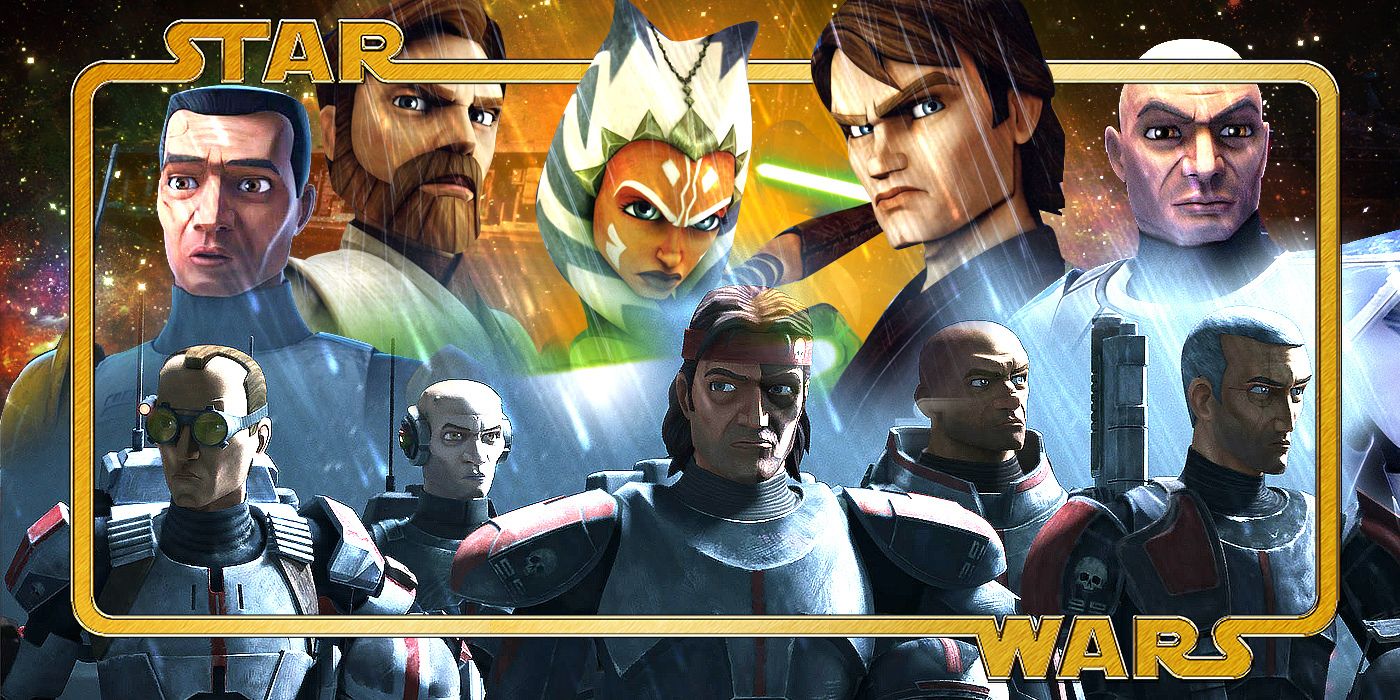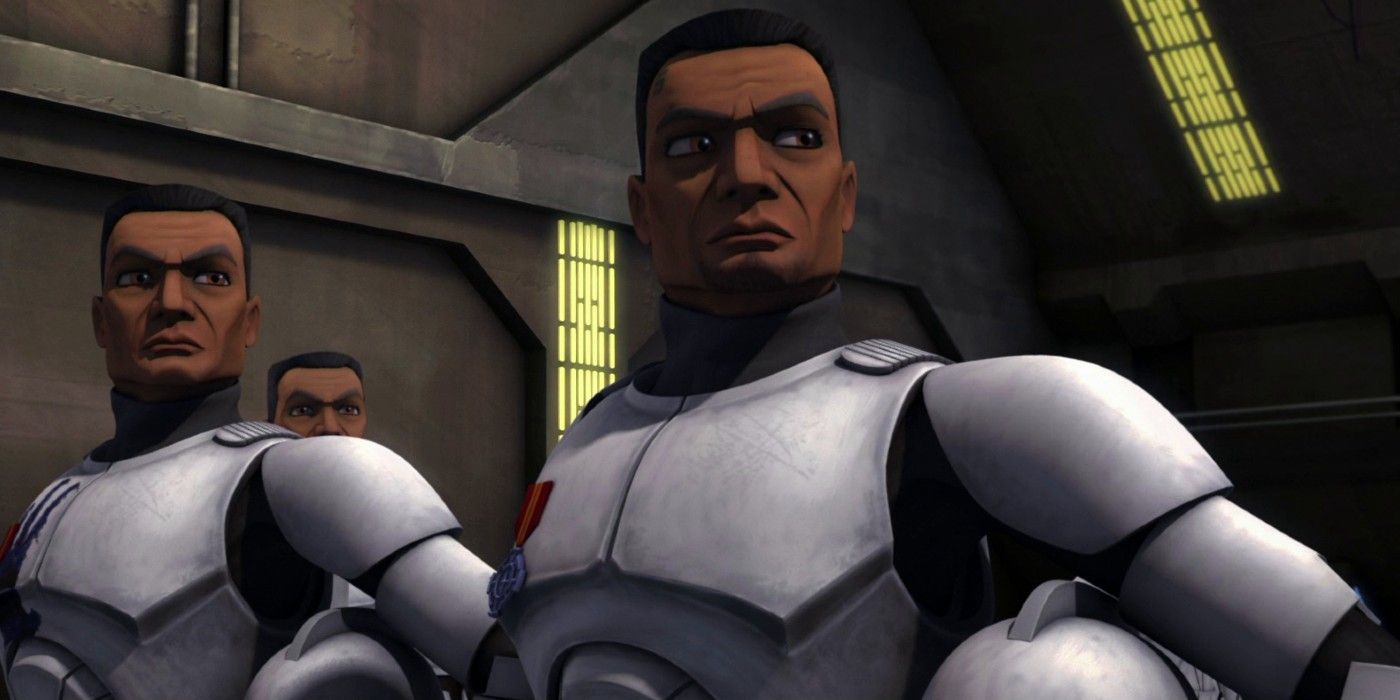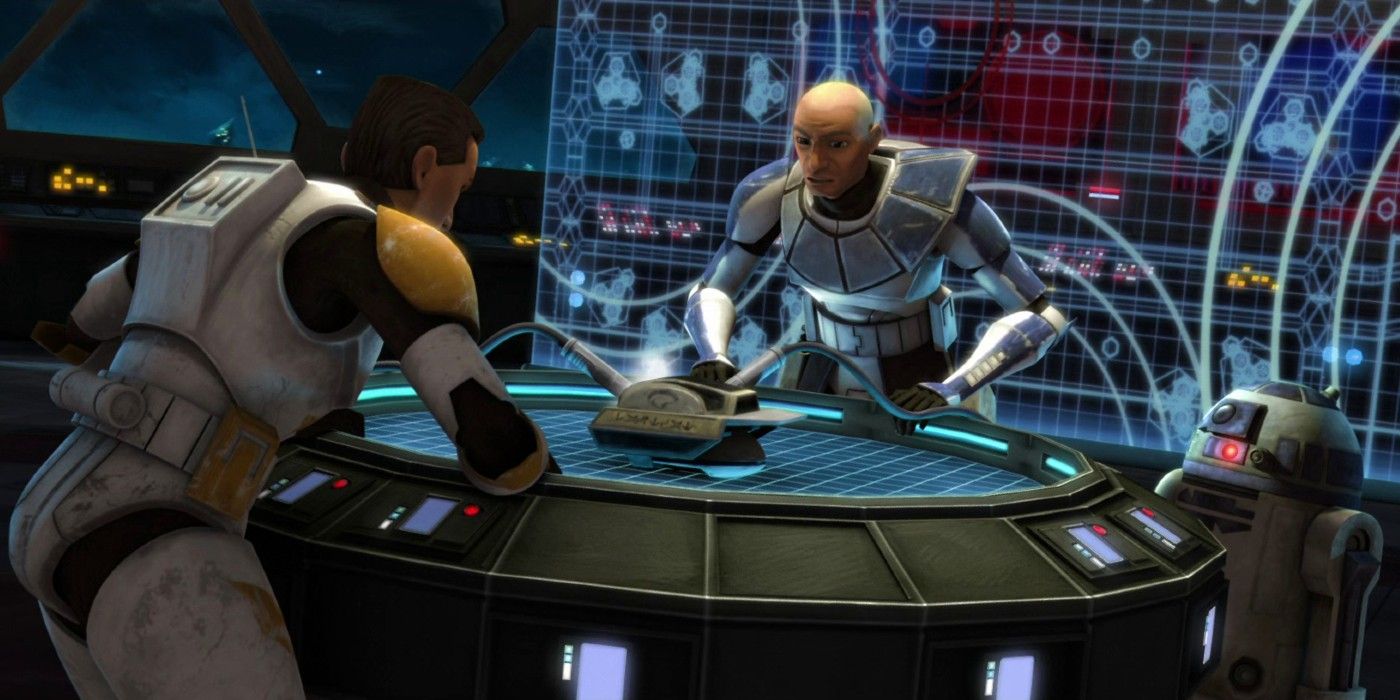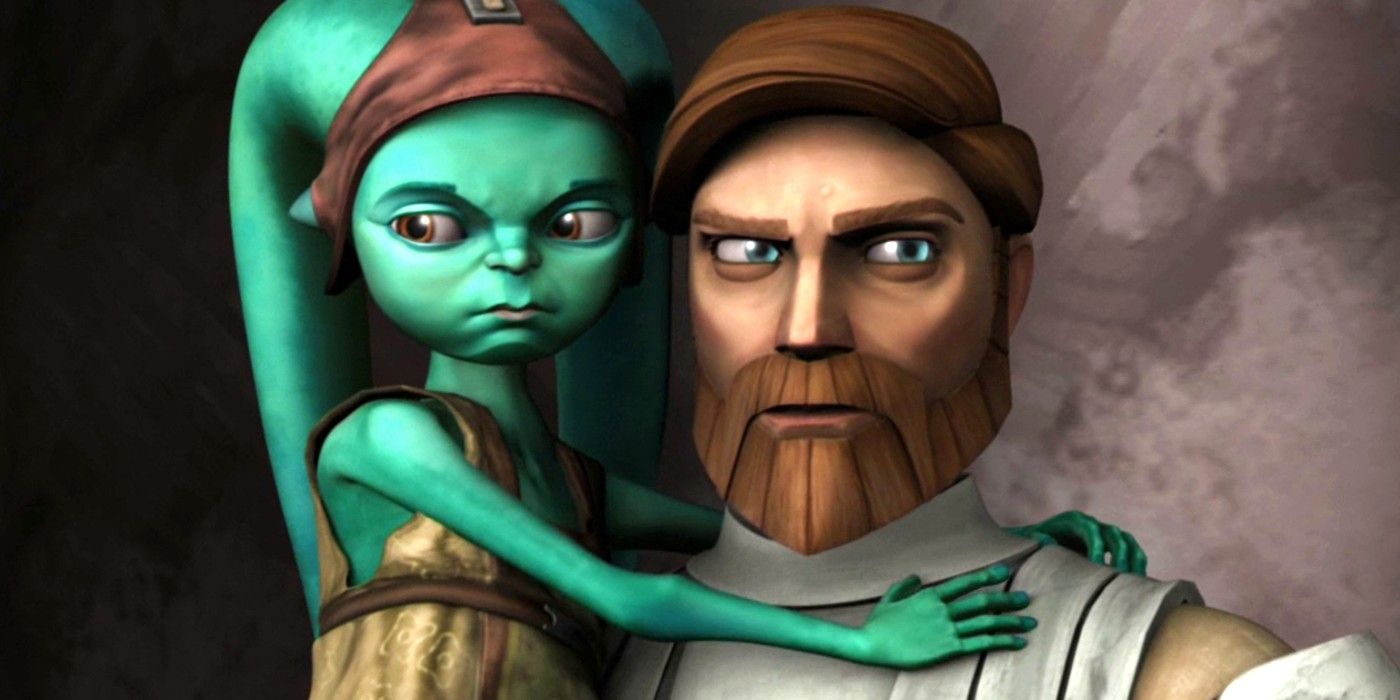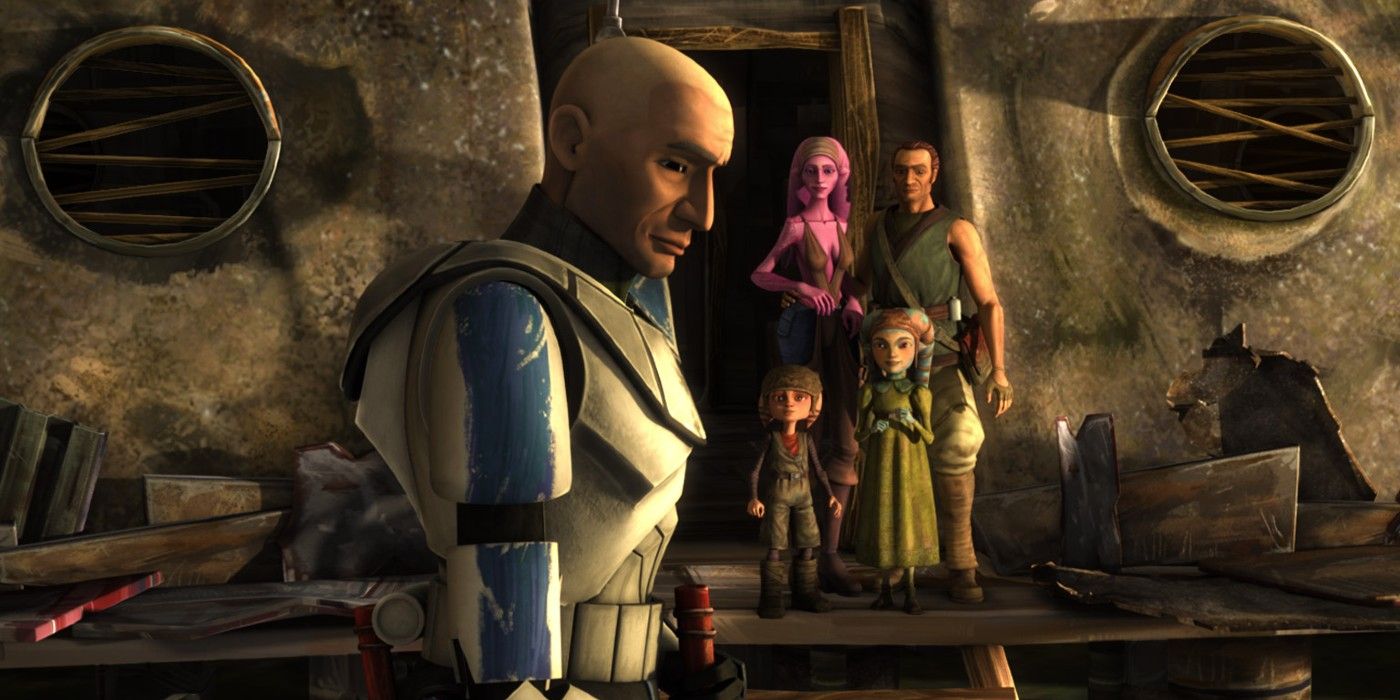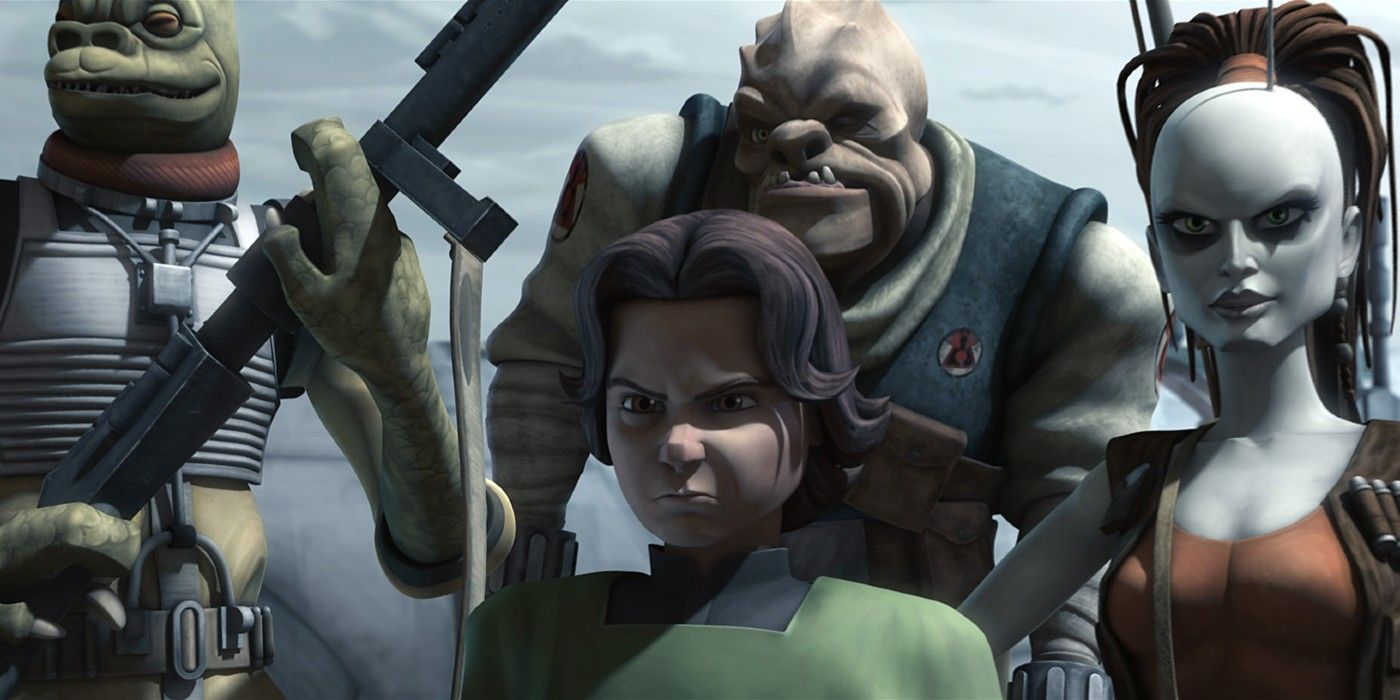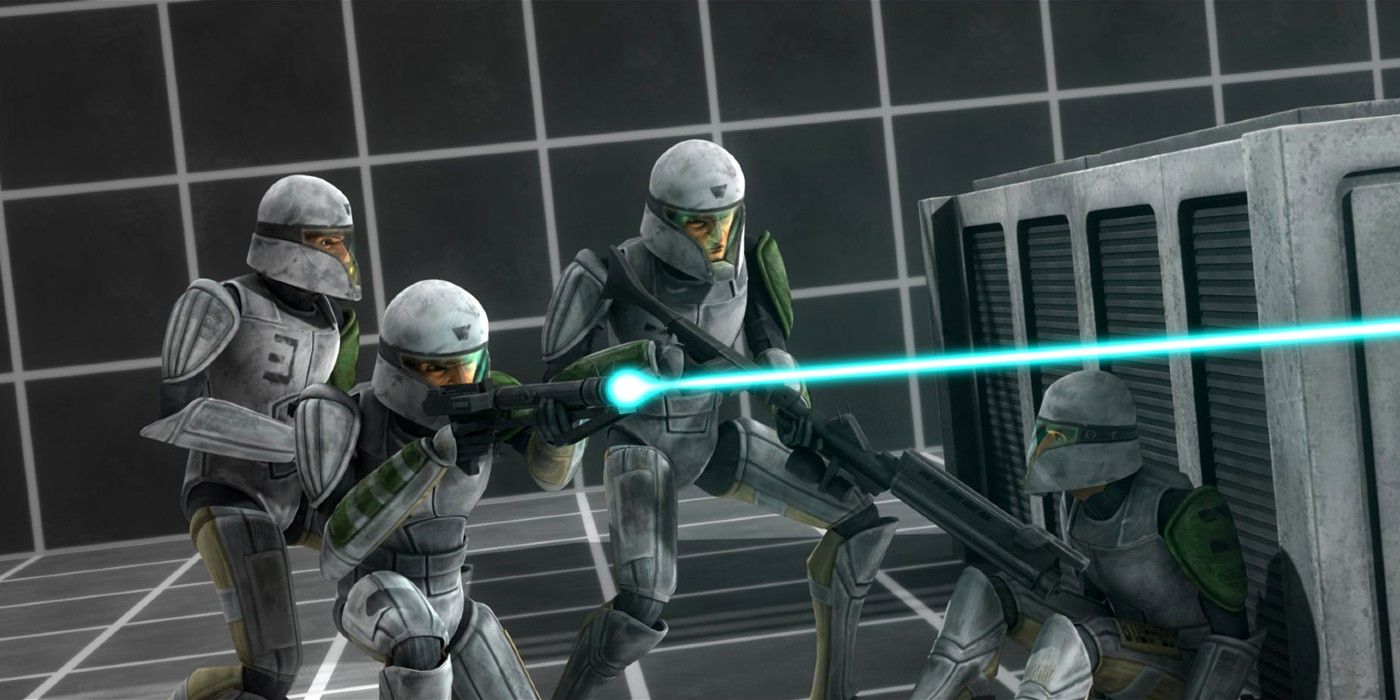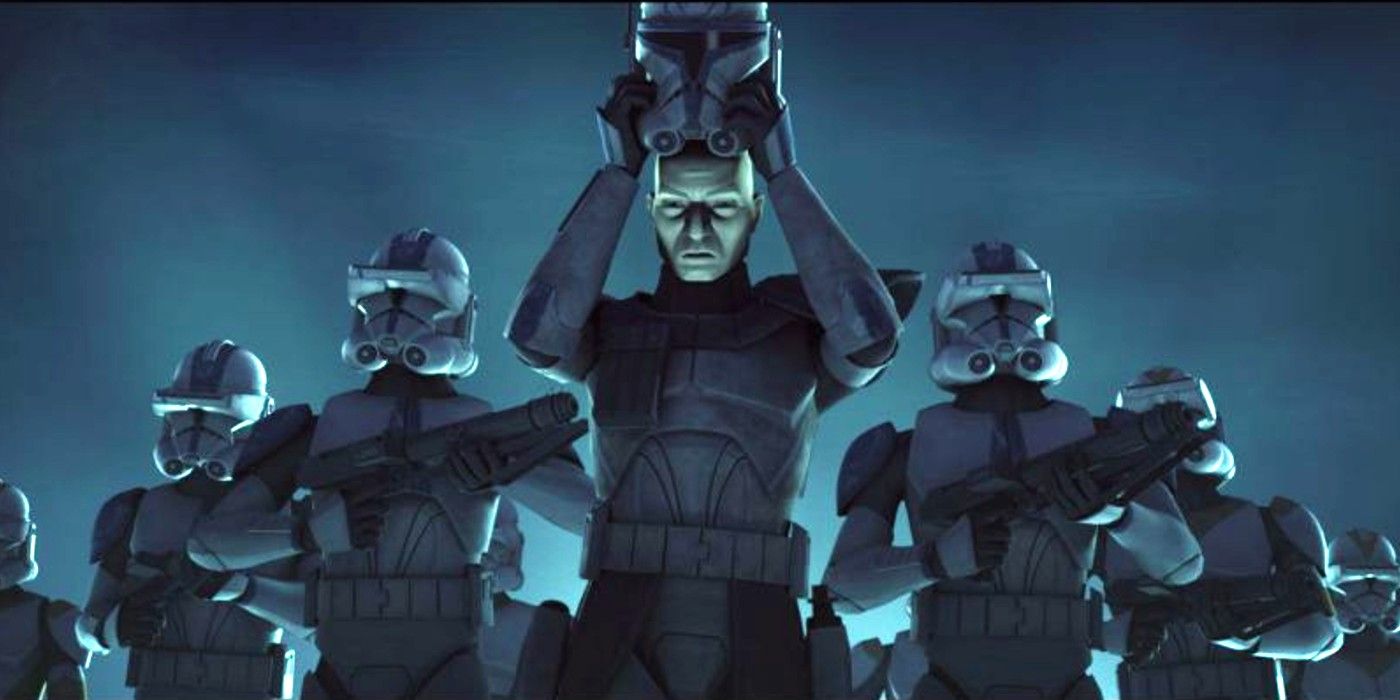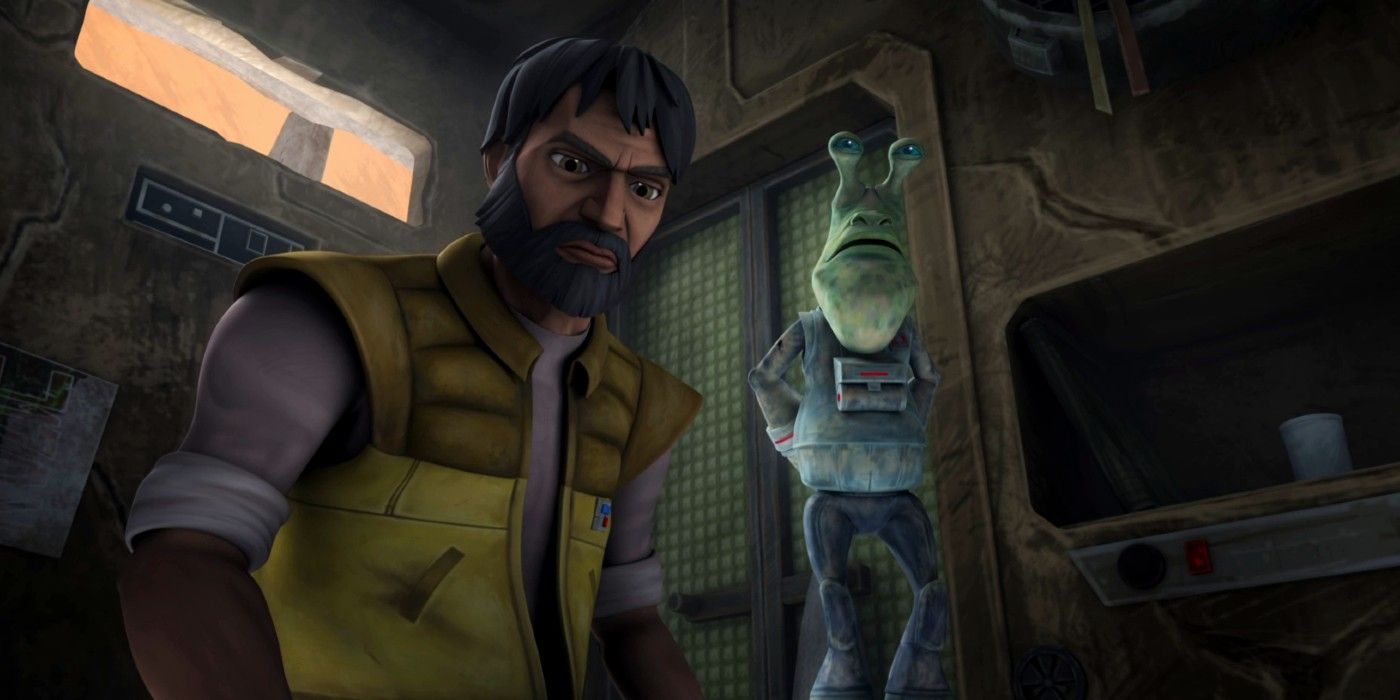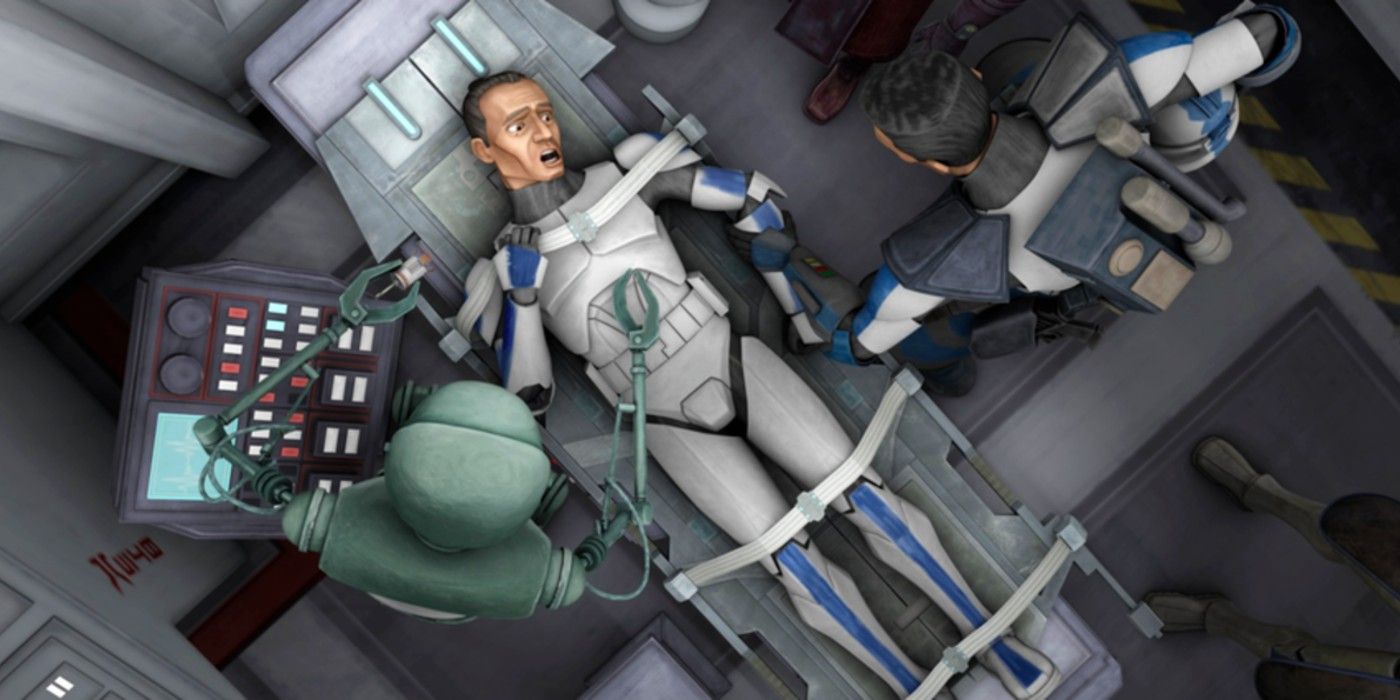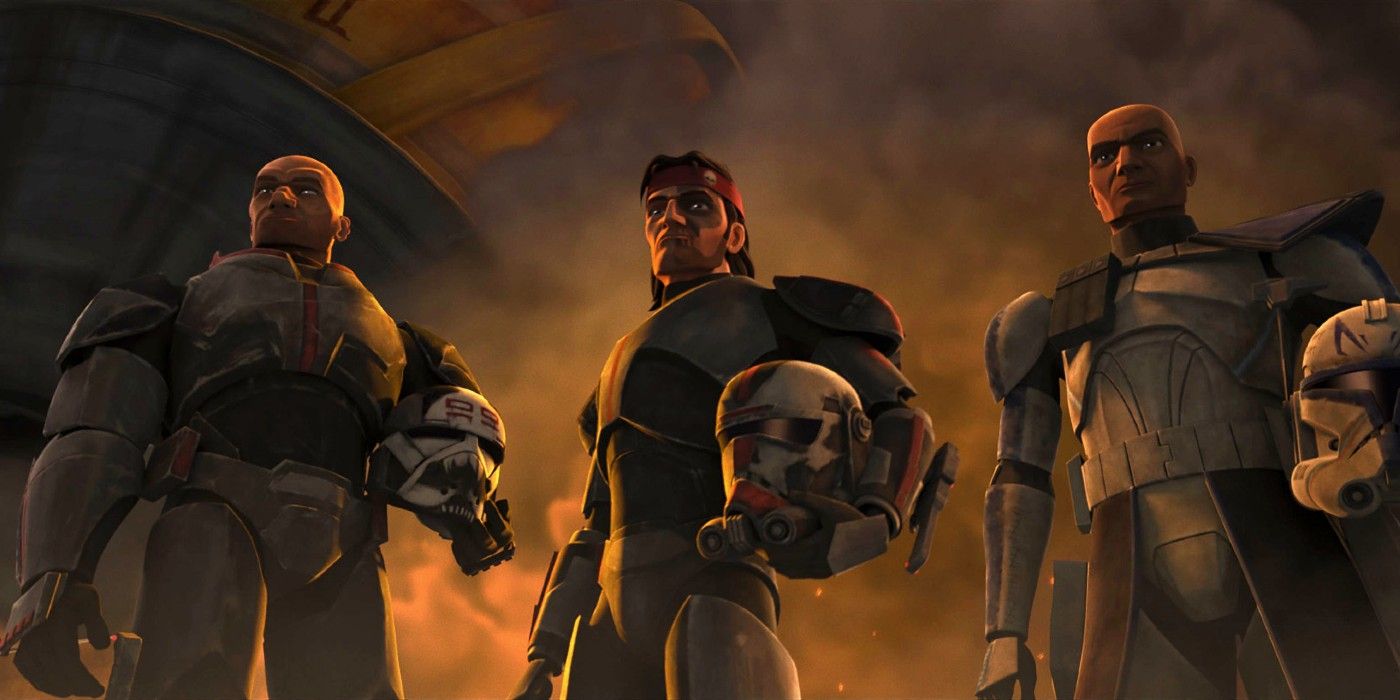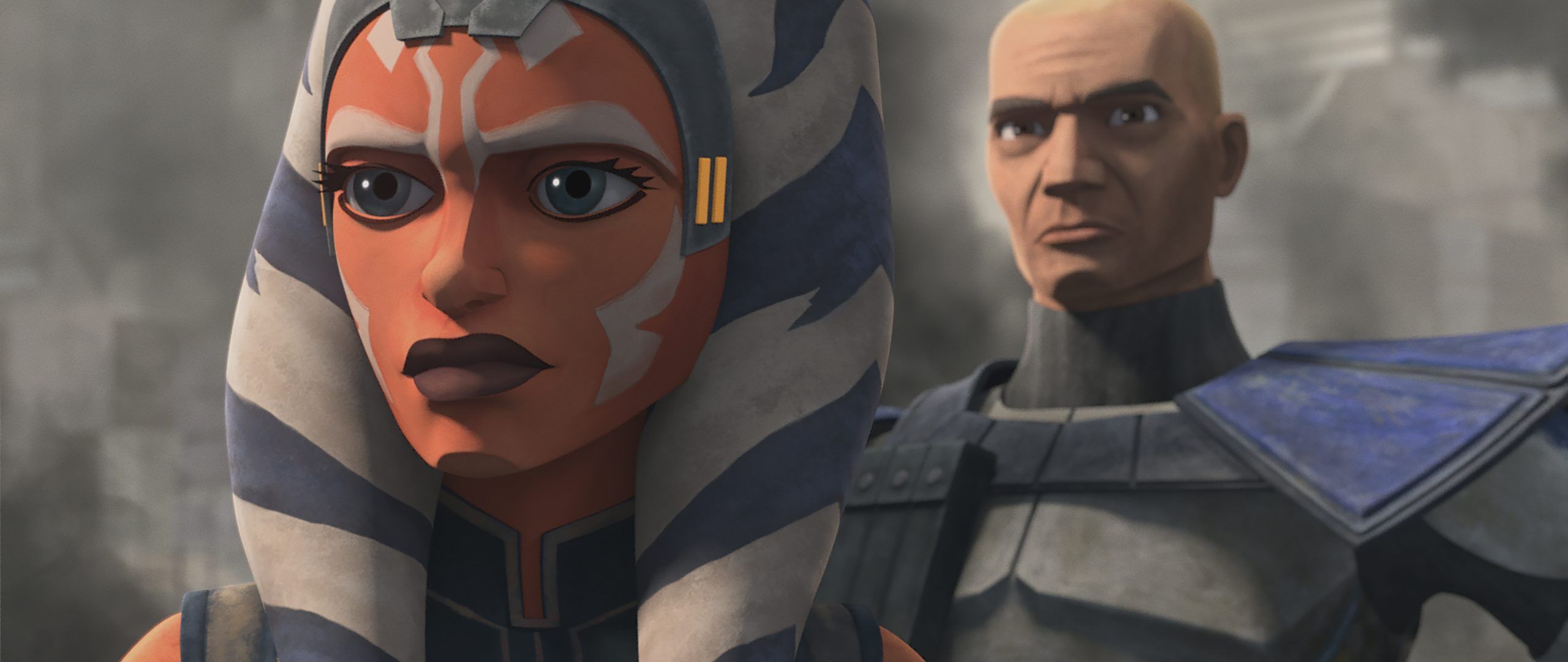The animated series Star Wars: The Clone Wars filled in the gaps left by George Lucas’s prequel trilogy. The prequels received (and deserved) criticism for their writing, pacing, and characterization, but buried within the films were great concepts that simply weren’t developed. The Clone Wars took the time to explore many of these abandoned ideas, allowing the Clone Wars themselves to feel more significant and Anakin Skywalker’s transformation into Darth Vader to feel more tragic. It would be impossible to talk about The Clone Wars without mentioning Dee Bradley Baker, who voiced every single clone trooper featured in the show. While each of these men were created from the DNA of bounty hunter Jango Fett, they developed unique personalities. Baker's masterful voice work gave life to dozens of characters and made them distinguishable.
The Clone Wars returned from a six-year hiatus to deliver its seventh and final season in 2020 on Disney+. But the clones’ story isn’t over yet, as the group of rogue soldiers known as “The Bad Batch,” introduced in the final season, are the stars of an upcoming spinoff series debuting May 4. Star Wars: The Bad Batch explores a critical point in Star Wars history when the clone troopers are activated by Emperor Palpatine’s Order 66 to kill their Jedi allies.
While it’s certainly worth watching the entire run of The Clone Wars, certain episodes are critical to understanding the history and psychology of the clones. Check out these episodes and storylines before starting The Bad Batch.
“Rookies” (Season 1, Episode 5)
It was clear early on that The Clone Wars would be taking the lives of the clones seriously, and “Rookies” introduced many of the key recurring characters. The rookies themselves are Hevy, Echo, and Fives, three inexperienced soldiers who are stuck protecting a small moon far away from the central conflict. When an upgraded droid battalion invades, the three daydreamers see their base overrun and their brothers killed, and are forced to retake the station Die Hard-style.
The daydreaming of men starved for conflict emulates Luke Skywalker’s introduction in A New Hope, and “Rookies” helps to establish the type of banter that the clones have with each other. The episode also shows the diversity of personalities that the clones have - Echo is a nerdy type, Fives is a reliable do-gooder, and Hevy is a bit of a rebel. When main characters Captain Rex and Commander Cody show up, the rookies look up to them as mentors in an interesting parallel to the Jedi.
“The Hidden Enemy” (Season 1, Episode 16)
If “Rookies” didn’t hammer home enough that the clones are actually individuals, then “The Hidden Enemy” solidified it. This time, a clone is a villain! When Anakin and Obi-Wan suffer a series of unexpected defeats at the hands of the Separatists, they suspect that an informer has been leaking their battle plans. When Rex and Cody investigate, they discover that the traitor is one of their fellow troopers, working alongside Asajj Ventress.
In this episode, Rex and Cody play the leads in a hard-boiled detective story. Baker’s performance is absolutely stellar, and the confrontation with the eventual culprit is one of the show’s more thoughtful moments. What is the price of freedom if it means dooming the people you care about most?
“Innocents of Ryloth” (Season 1, Episode 20)
One of the more mature episodes, “Innocents of Ryloth” follows new characters Waxer and Boil as they discover and protect a young girl named Numa on the war-torn planet of Ryloth. The two troopers bred for war get to see the impact that the conflict has on ordinary people, and the devastation inflicted upon families torn apart after a political victory is claimed. Pretty heavy stuff for a kids’ show!
The clones only got scant dialogue in the prequels, so it’s interesting to see Waxer and Boil openly contemplate their purpose as they’re forced to bring a child along in their mission to help Obi-Wan Kenobi. Numa’s arc ultimately goes in a more heartwarming direction, but the clones questioning the Republic they fight for is a theme the show would return to in later seasons.
“The Deserter” (Season 2, Episode 10)
One of the most tragic aspects of The Clone Wars is the inevitability of where the story leads. As interesting as it is to see how the clone troopers grow close to their Jedi leaders and adopt some of their traits (Cody is by-the-book like Obi-Wan, Rex adopts Anakin’s rogue qualities), it’s all leading to the tragic sequence in Revenge of the Sith in which the clones ruthlessly assassinate the Jedi in mass.
“The Deserter” is one of the few episodes to suggest a more peaceful solution, where Rex encounters the clone deserter Cut Lawquane, who has abandoned the Clone Army to start a family. Rex’s moral dilemma over whether or not to turn Cut in is compelling, as is the fact that one of the clones was able to walk away from what he was bred and programmed to do. The final shootout in which Cut’s farm is overrun by droids is frankly awesome, calling back to the western influences of John Ford that inspired the original Star Wars films.
“Death Trap” (Season 2, Episode 20)
One of the frequent criticisms of the prequels is that they over-explained elements from the original trilogy that were left purposefully ambiguous. (Midichlorians, anyone?) This is particularly true for the backstory of Boba Fett, the mysterious bounty hunter from the original trilogy whose origin became unexpectedly convoluted after Attack of the Clones. The Clone Wars did its best to take that backstory, which established Boba Fett as an identical clone of his father, and set him on a revenge path against his father’s killer Mace Windu. In “Death Trap,” Boba goes undercover as a clone initiate, so we get to see what the Clone Academy looks like!
After seeing the Jedi training process in detail, it’s interesting to spend some time with a group of young clone soldiers and see how they behave when they're not fighting. Attack of the Clones actor Daniel Logan returns to voice Boba Fett, who forms a bond with some of the other cadets in training before ultimately revealing his true identity and betraying them. It’s one of the darker storylines, and is mostly focused on establishing one of the saga’s most iconic villains. Boba’s contempt for the men who share his face is particularly grim.
“Clone Cadets” and “ARC Troopers” (Season 3, Episodes 1-2)
The characters from “Rookies” return for these two episodes that bookend their first appearance with a return to the clone growing facility on Kamino, the water planet first seen in Attack of the Clones. “Clone Cadets'' is a prequel in which Hevy, Echo, Fives, and the rest of the squad develop as a team throughout the clone training courses. It’s a fun spin on the concept of youthful bonding, presented with a tinge of fatalism considering where these characters end up.
“ARC Troopers'' sees Echo and Fives returning to their homeworld when it’s attacked by the combined forces of Asajj Ventress and General Grievous. This is a mostly action-centric episode, but it shows how much Echo and Fives have grown and matured since their training days, and how they’ve been hardened by the war. Also, the planet of Kamino, which felt cold and distant in Attack of the Clones, finally feels like a lived-in, thriving environment.
“Darkness on Umbara,” “The General,” “Plan of Dissent,” and “Carnage of Krell” (Season 4, Episodes 7-10)
These episodes comprise the single most powerful Clone Wars storyline, and one of the best in the entire Star Wars franchise. The “Umbara arc" is essentially Apocalypse Now if Marlon Brando had been a squid-like Jedi. Rex and many of the established characters are assigned to work for enigmatic Jedi commander Pong Krell, whose radical beliefs about the clones’ inhumanity puts him and Rex at odds. This four-part story is also one of the most cinematic of the series, with George Lucas’s old USC buddy and Academy-Award winning editor Walter Murch stepping into direct the episode “The General.”
The four episodes are among the series’s most disturbing. Rex’s ultimate decision to confront Krell comes after the clones are pitted through psychological torment and needlessly sacrificed at the discretion of the Jedi leader. Krell’s radicalization at the hands of the Sith and the trauma the clones face when defeat seems inevitable speak to a more nuanced depiction of war than the standard “clones versus droid” storylines.
“Missing in Action” (Season 5, Episode 12)
Ironically, one of the worst storylines on The Clone Wars features a surprisingly great installment (it was also the show’s 100th aired episode). The Season Five “D-Squad” story arc followed R2-D2 and a team of droids as they go behind enemy lines. In “Missing in Action,” they encounter Gregor, a clone with amnesia who works as a mistreated dishwasher and has no knowledge of the larger war or his origin.
Similar to “The Deserter,” the episode explores clone psychology through a character who has been cut off from the central conflicts. Gregor’s exploration of his inherent abilities ultimately goes in an inspirational direction, but seeing a common man with no ambitions become intertwined in a war he has no stake is rather unsettling. The idea that the clones have little freedom to disobey their intended purpose would show up again when the Order 66 storylines began.
“The Unknown,” “Conspiracy,” “Fugitive,” and “Orders” (Season 6, Episodes 1-4)
Essentially Star Wars meets The Parallax View. Exactly how the clones’ programming to execute the Jedi was orchestrated was never properly explained in the prequels, and the first four episodes of Season Six take inspiration from 70s paranoid political thrillers when Fives suspects a conspiracy within the Republic Army. His covert operation leaves him branded a traitor when he discovers a trail of deception leading back to Chancellor Palpatine.
The explanation behind Order 66’s origins could have easily been an exposition dump, but The Clone Wars takes inspiration from Cold War-era political thrillers to craft a harrowing story about Fives uncovering a sinister plot and being forced to go on the run. Palpatine’s manipulative strategy to falsely incriminate Fives mirrored a similar storyline in the previous season in which Ashoka Tano is blamed for a terrorist attack.
“The Bad Batch,” “A Distant Echo,” “On the Wings of Keeradaks,” and “Unfinished Business” (Season 7, Episodes 1-4)
The first new The Clone Wars episodes in six years also became the backdoor pilot for the upcoming The Bad Batch series. Essentially The Dirty Dozen in space, the episodes pair Rex with a group of genetically altered clones that make up an elite task force and don’t strictly adhere to Republic protocol. Within the motley crew is the stoic leader Hunter, burly strongman Wrecker, neurotic sniper Crosshair, and the aptly named tech specialist Tech.
The four-episode arc overall is more action-centric and features a lot of great banter between the clones, but it also deepens Rex’s maturity as he begins to reflect on the loss of Echo during Season 3. Many clones die throughout the series, but this is one of the rare times in which the survivors are seen mourning their comrades. Rex’s personal ties to rescuing Echo help to strengthen a fairly standard storyline, and Echo’s return as a tortured POW provides an intriguing hook for The Bad Batch series to expand on.
“Old Friends Not Forgotten,” “The Phantom Apprentice,” “Shattered,” and “Victory and Death” (Season 7, Episode 9-12)
While not strictly focused on the clones themselves, the final story arc of The Clone Wars finally delivers the resolution that the entire series was building towards: the execution of Order 66 and the fate of both Ashoka Tano and Captain Rex. Ashoka is hunted by her men when Palpatine’s orders are delivered, and while she manages to save Rex from his programming, many of the established clones are either slain or converted into remorseless Stormtroopers.
While the outcome is inevitable and there was little mystery surrounding Ashoka and Rexs’ fates given their subsequent appearances on Rebels, the build-up to the showdown is a nail-biting sequence. As Collider’s Dave Trumbore pointed out in his review of “Shattered,” the event that is purely tragic in Revenge of the Sith is given infinitely more emotional weight, especially considering Ashoka’s bond with the clones and the sheer amount of time fans have spent with these characters since the beginning of the series. Characters that each felt unique in prior storylines are stripped of their humanity and transformed into faceless killing machines.
The final episodes allow for some quiet moments of contemplation for Rex to consider his place in a post-war era. It will be interesting to see how The Bad Batch examines these characters in the early days of the Galactic Empire, and if any of the other clone characters are able to break free of Palpatine’s scheme.

